Disclaimer: This blog post contains affiliate links. If you make a purchase through these links, I may earn a small commission at no additional cost to you. Learn More. Thank you for supporting our garden community.
Is Window Light Enough for Seedlings? The Truth
Starting seeds indoors is a great way to get a jump on the growing season, but many gardeners wonder: Is window light enough for seedlings? The short answer is probably not, but there are exceptions. In this guide, we’ll break down whether you can successfully grow seedlings using natural light from a window.
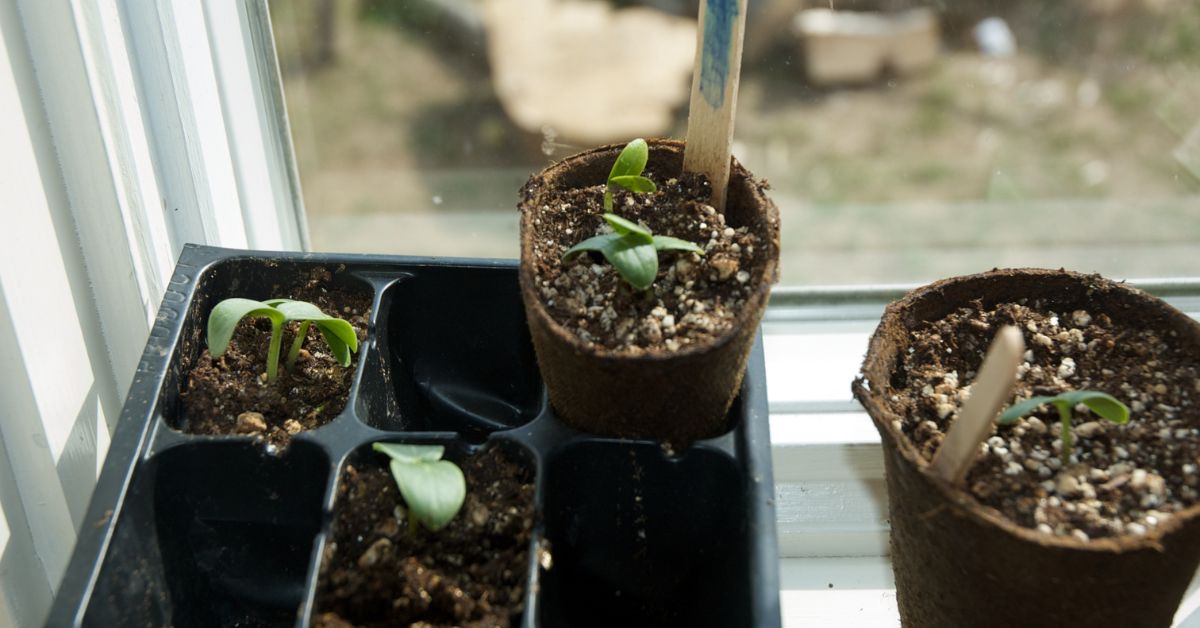
Is Window Light Enough for Seedlings?
I recently posted this question in the Northern Ontario Gardening Club Facebook group. And I got over 60 comments, each with their own insights.
I thought that nobody would be using a windowsill to start their seedlings, but I think they outnumbered those who use grow lights.
I got a lot of information from them, so I thank everyone for their responses.
So I’ll cover everything I learned, with my subjective experiences.
That being said, let’s get right into, “is window light enough for seedlings?”
Products:
Save 10% on your first Burpee seed order using code BURPEE10
Easy to Grow seed varieties from Burpee for guaranteed success
Adjustable LED grow light stand
How Much Sunlight do Seedlings Need?
To grow quickly and become healthy plants, seedlings need at least 12-14 hours of direct light every day. I normally give them about 14 hours, sometimes a little bit more if they’re lucky.
I turn them on at 6:30 when I wake up, and I turn them off around 8:00-9:00 when I go to sleep.
And make sure that it’s direct light; the light needs to be right on the leaves. It can’t be indirect light.
If you’re using a sunny window to grow seedlings, then the maximum amount of hours you can give them is very little.
Especially during winter and early spring here in Ontario, there isn’t much sunlight going around.
For example, the sun rises here at about 7:20 am, and it sets at about 7:30 pm. So yes, that is 12 hours. But the problem is that unless your house is in a completely open field without any houses or trees, then you’re not getting 12 hours of light.
At the very maximum, you might get 5-6 hours of direct sunlight through your window. Of course, this isn’t terrible, but it’s not ideal.
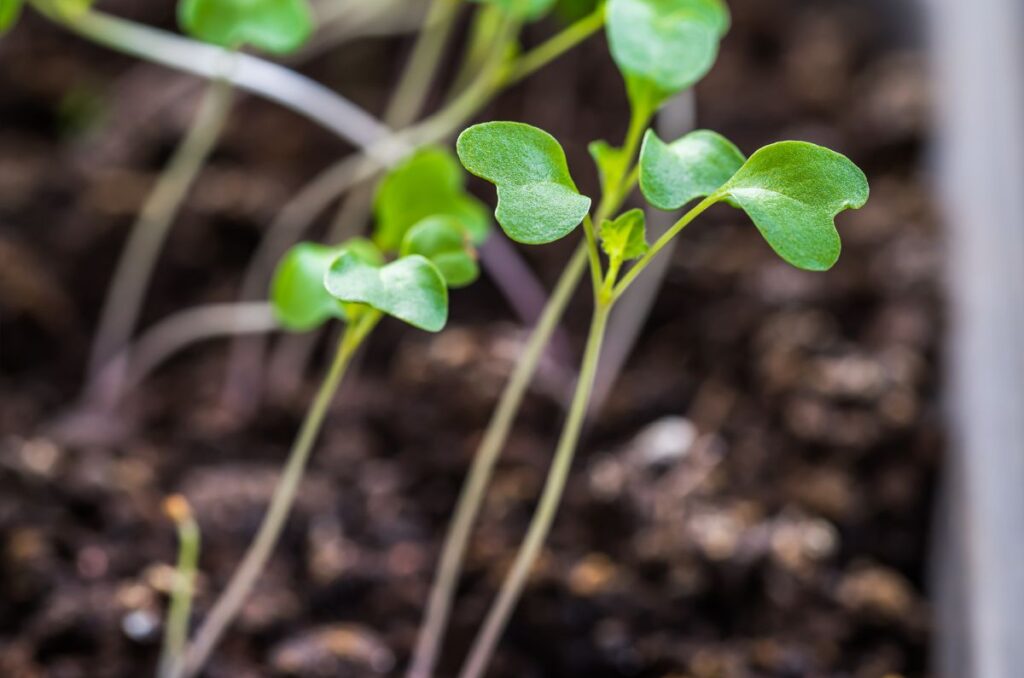
Why do I Get Leggy Seedlings?
A lot of gardeners who use window light to grow seedlings eventually get leggy seedlings. Leggy seedlings are seedlings that are stretched out way too much, causing the stem to be leggy.
This produces weak and scraggly seedlings that won’t be able to withstand harsh conditions.
The most common cause of leggy seedlings is too little light. So if the seedlings get less than 6-8 hours, then they’ll start to stretch out in search for more light.
Seriously, they try to reach the light by elongating their stems.
This will also happen if the light source is really weak. So if the bulk of your sunlight is in the morning or evening, then it probably isn’t strong enough to support your seedlings’ growth.
The really strong light comes in the afternoon, typically around 12-3 pm. So unless they’re getting this light, then your seedlings will probably stretch out and become leggy.
Why and How You Should Use Grow Lights
Grow lights are the best option when it comes to providing light for your seedlings. They’re much easier to use, you can keep them on for as long as you want, and you can put them as close to your seedlings as you want.
Here’s how to get the most out of your grow lights.
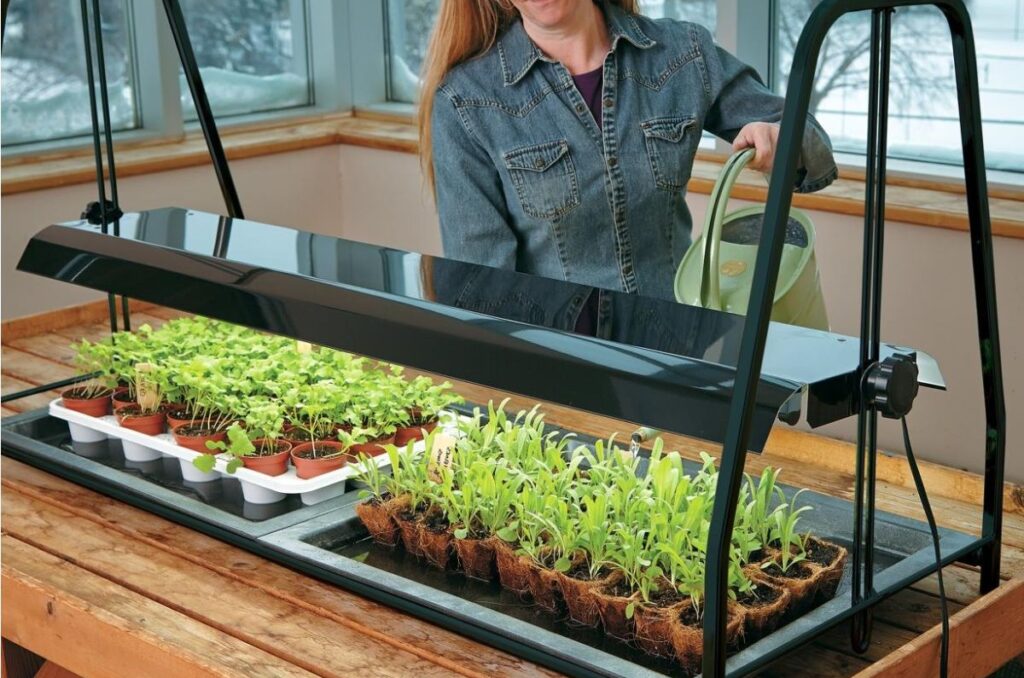
Choosing the Right Grow Light
A grow light is just a light. It’s not some special kind of light that’s only used for plants. So you have to choose between LED, fluorescent, and incandescent.
LED lights are by far the best option. They give the full spectrum of light, they last long, and they’re very intense. The only problem is that they tend to be more expensive.
Fluorescent lights are really popular as well, but they are not as reliable as LEDs. They tend to gradually dim out as they get older, which can become a problem.
A lot of people end up having to replace their fluorescent bulbs every year, just to prevent them from dimming out too much.
LEDs don’t have this problem; they stay fully bright until they burn out completely.
Then you have to decide if you want free-standing lights or a grow light stand.
Personally, I use this grow light stand from Lee Valley. I love the products at Lee Valley because they’re high-quality and long-lasting.
But the free-standing ones might be even better quality. Because you’re paying just for the lights, they’ll be the highest quality that you can get. But then you have to attach them somewhere.
Maybe you can make your own stand, or a lot of people attach them to their ceiling in the basement.
You can check out these free-standing LED grow lights from VIVOSUN.
Getting the Right Distance
To prevent a lot of the problems related to using window light, you need to properly space the grow lights from your seedlings.
If the light source is close enough, then the seedlings won’t have the chance to become leggy. A good distance is about 2-3 inches away from your seedlings.
Remember that grow lights are nothing in comparison to the intensity of the sun. But if you keep them close enough to your plants, then it will mimic sunlight.
Try not to go beyond about 3 inches, as your seedlings will start to stretch out to reach it. I’ve found that the sweet spot is 2 inches.
Keep the Lights on for Long Enough
Like I said before, seedlings need about 12-14 hours of direct light every day. So that’s more than half the day that the lights should be on.
Keeping them on for long enough will also help to prevent leggy seedlings.
If you turn them on after you wake up and turn them off a couple of hours before you go to bed, then you’ll get 12-14 hours (assuming you sleep for 8 hours).
But there are even outlet timers that you can plug your grow lights into. Set the time that you want it to turn on and off and it’ll do it for you.
Best Way to Start Seeds in a Window Sill
If you don’t want to pay the extra dollar and get some grow lights, then it is still possible to use window light. I said possible, not optimal.
A lot of people in the Facebook group said that they use a sunny window for all of their seedlings, so here’s what they said:
- “I have a big sunroom with windows all around”: This is obviously much better. If there are windows all around your seedlings, then they’re naturally going to be exposed to more sunlight. But not everybody has the space or money for a sunroom.
- “I used windows for several years but was only doing 15-20 plants”: This is very common among indoor gardeners. Of course, if you’re only growing 15-20 plants inside, then you’ll have more space to give them more light. If you have a lot of plants, then it’s going to be hard to clear up enough window space.
- “I use a small greenhouse tent”: This is also a clever idea because it helps to concentrate the sunlight and heat in one area. Those small plastic tents are available everywhere and are pretty cheap. This 4 tier mini greenhouse is just under $40, so it’s definitely worth a try.
- “I use grow lights, especially for my peppers”: So this is hinting at the idea that seedlings need a lot of light, especially peppers in this case. Make sure to give them enough sunlight from a very sunny window.
- “I play merino 2x a day to keep them growing in the right direction”: This is a somewhat funny comment but it is true. You’re going to have to constantly turn the trays to keep the seedlings growing upright. And if one window doesn’t get enough light, then you’ll have to move them around your house to keep up with the sun.
- “I don’t have any south facing windows that aren’t blocked by trees”: This person obviously has a problem with trees blocking their south-facing windows. Make sure you choose a window that isn’t obstructed by trees or other buildings.
- “The warmth does a lot to help them”: This commenter is referring to the warmth provided by the sun. It helps certain vegetables, like peppers, eggplant, and cucumbers, to germinate. These crops need to be between 24 and 29 degrees celsius to germinate quickly.
- “I move them from south facing windows to west facing as the sun moves”: Another commenter who moves their seedlings to different windows throughout the day as the sun moves across the sky. This is by far the best way to do it when using a sunny window. She said, “I count this into my daily physical workout.” So I guess that’s another reason to do it.
Consider these comments and tips if you’re using window light to grow your seedlings.
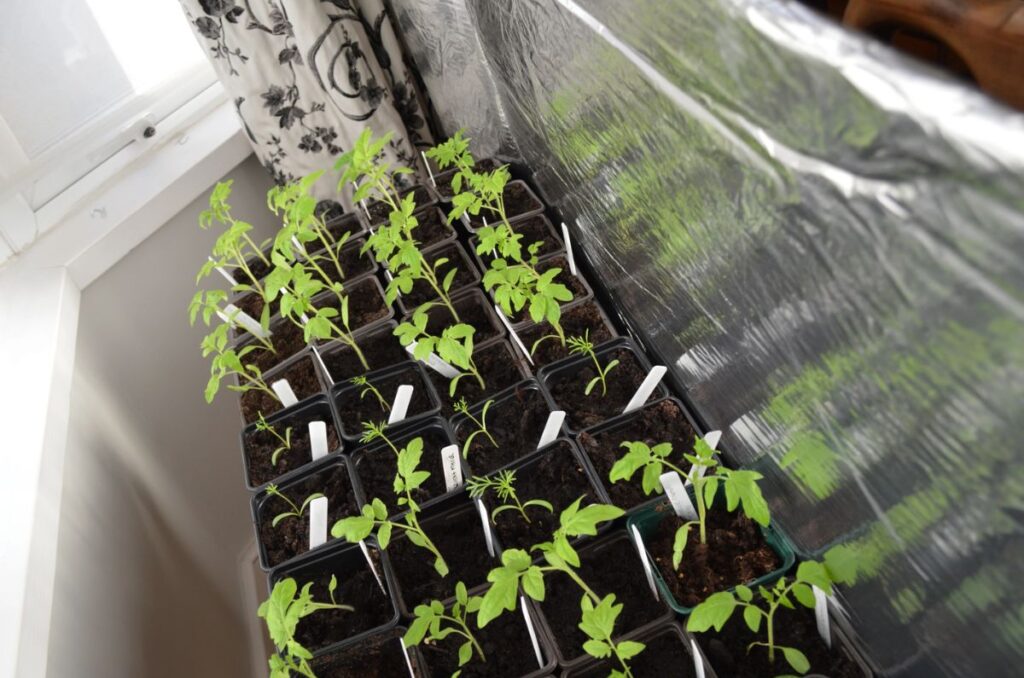
My Tips for Growing Seedlings With Window Light
Here are a few tips if you still want to use window lighting to grow your seedlings:
- Rotate Your Seedlings: South-facing windows provide the most sunlight throughout the day, but it’s still not enough. To get them growing better, move your seedlings around your house every day as the sun moves across the sky. This gives them access to as much sunlight as possible.
- Use Reflectors: Things like white paper or tin foil can help reflect sunlight towards your seedlings. Prop up sheets of paper or tin foil around your seedlings to direct more light towards them.
- Grow Low-Light Plants: Fruiting plants, like tomatoes, squash, and peppers, need lots of light to grow strong and healthy. Plants like lettuce, arugula, other leafy greens, and some herbs can actually tolerate less light. So plant these if you know for sure that you won’t get enough sunlight through your windows.
Frequently Asked Questions
Seedlings that don’t get enough light will eventually become leggy because they’ll start to stretch towards the light. Leggy seedlings are very weak and may struggle when you transplant them outside.
If the light source is only coming from one side, then your seedlings will gradually lean towards that side. This is called phototropism, or the response of plants to a light stimulus.
No, seedlings, like all plants, need a period of darkness to rest. Give them about 12-14 hours of direct light every day.
Some people say that they use regular LED light bulbs for their seedlings, but I’m not convinced that they’re the same as grow lights. Grow lights are specifically designed for full-spectrum lighting, which is ideal for young seedlings.
If by moving them outside your seedlings will get more light, and they won’t freeze to death, then you can and should do it. Just make sure it’s not too cold and that you bring them inside if it rains, gets windy, and at night.
Even More Gardening Ideas
Here are a few more posts to get the ball rolling in your garden!
- How to Grow Cucumbers from Seed to Harvest
- Planting Bare Root Raspberries in Spring
- Don’t Restart Your Leggy Seedlings. Try THIS First!
If you liked this article, make sure to share it with your friends and family members who are also looking to sharpen their gardening skills. Also, consider signing up for our email newsletter; don’t worry, we won’t send you spam, just fresh gardening ideas every week!
If you want to learn more about vegetable gardening, make sure to check out what I’m doing on Facebook, YouTube, and Pinterest.
Pin this post for later:

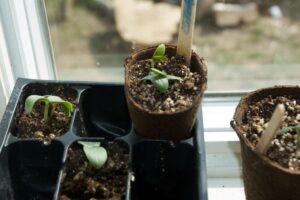
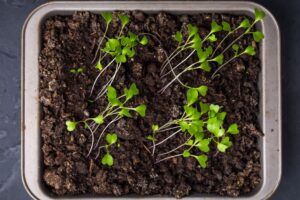
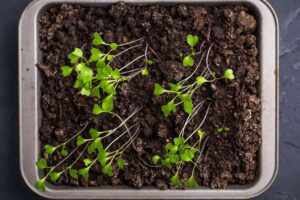
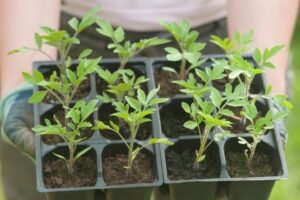
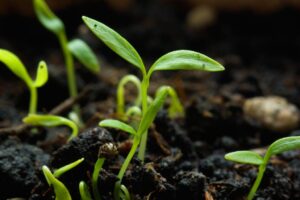
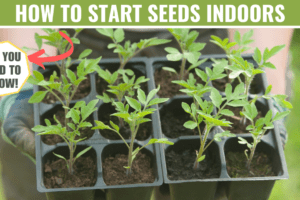
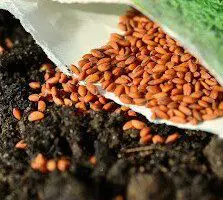

Leave a Reply